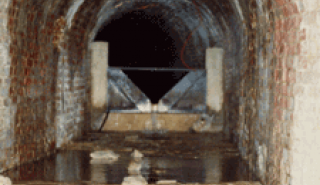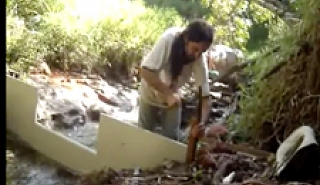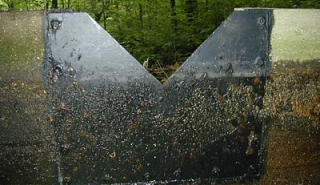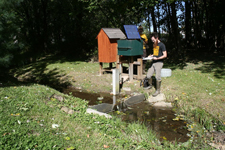 The section of the weir that the water overflows is termed the notch or overflow section.
The section of the weir that the water overflows is termed the notch or overflow section.
If the notch plate is thin enough that the water springs clear of the downstream face, the weir is terms a sharp-crested or thin-plate weir.
Weirs are named by the shape of their notch opening and a relevant dimension. Thus, weirs can be Rectangular, Trapezoidal, Triangular / V-notch, etc. One particular trapezoidal weir is the Cipolletti weir – named after its developer.
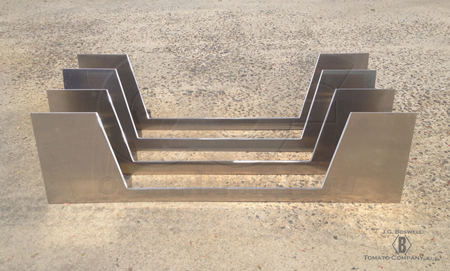
In the case of Rectangular or Cipolletti weirs, the bottom edge of the notch in the weir plate is termed the crest. For V-notch weirs, the point of the triangle is the crest.
The lowest elevation of the notch over which water flows is the zero reference elevation against which head is measured.
For weirs where the notch does not span the full channel, the flow on sides of the channel must turn to pass through the notch opening. This turning and acceleration results in a curved flow path or side contraction allowing the water to spring clear of the notch opening. As the water springs clear of the overflow opening, the jet formed is narrower than the opening is wide.
Weirs act as a dam across the flow of water. As a result, there is a body of water created upstream of the weir. This body of water is the weir pool.
Where the crest of the weir is elevated above the floor of the channel, the flow coming along the bottom of the weir pool and up a sufficiently high bulkhead springs up in a curved, underside jet surface or crest contraction.
The water that passes over the weir crest – springing clear under free-flow conditions – is the nappe.
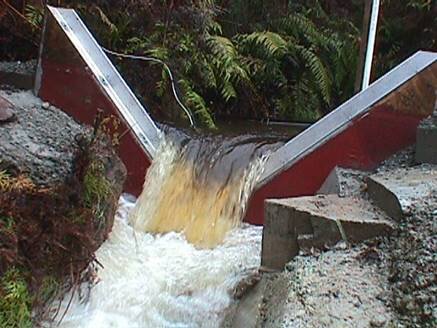
For a Rectangular weir, when the sides of the channel act as the ends of the weir and the nappe does not contract from the width of the channel – resulting in a suppressed weir. If the sides of the channel do not act as the ends of the weir and the notch opening is somewhat less than the width of the channel, the weir is contracted.
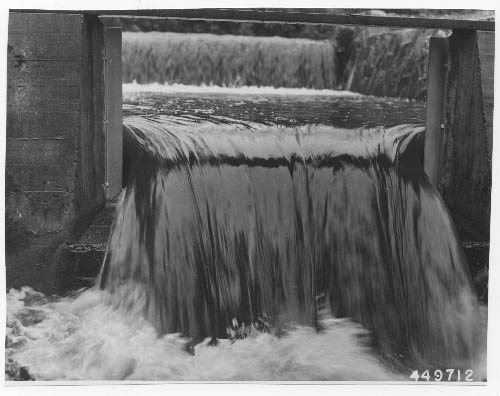
Source: Water Measurement Manual


